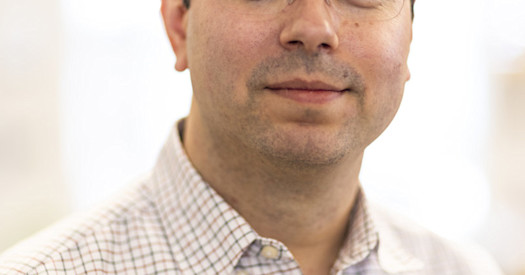NOTE: BBI’s Dr. Doug Fowler on September 16 presented at a National Human Genome Institute’s (NHRGI) “Bold Predictions” seminar #7: The clinical relevance of all encountered genomic variants will be readily predictable, rendering the diagnostic designation “variant of uncertain significance (VUS)” obsolete. Joining him was Dr. Heidi Rehm of the Broad Institute and Harvard Medical School & Massachusetts General Hospital; the session was moderated by Dr. Ben Solomon, NHGRI’s clinical director. Following the seminar, Fowler elaborated on some of his observations. Watch the entire 90-minue seminar and previous sessions here.
One of your key points was that the “missense variants of unknown significance (VUS) represent a large and growing problem.” Why is this and how does your answer relate to the “bold prediction” of the seminar, “The clinical relevance of all encountered genomics will be readily predicable, rendering the diagnostic designation VUS obsolete?
VUS are a large and growing problem because, put simply, we are doing more genetic testing than ever. And, genetic tests reveal variants that often turn out to be VUS. Without some change to how we interpret variants, VUS will grow alongside genetic testing. This is why the bold prediction is so important, and why it's so important to invest heavily in strategies to mitigate VUS.
You indicated that with some key achievements/milestones, such as new technologies; assays in more contexts, such as cells and organisms; better and greater investment in modeling; and more clinical variants of known effects, that the certainty of realizing that “bold prediction is “mostly yes.” What additional activities or knowledge would it take for your assertion to be more “emphatically yes?”
One big thing that is needed is collaboration between the research and clinical communities to address the dearth of clinical variants of known effect. Another is a decrease by a factor of ~10 in the cost of assaying a variant experimentally. The rest of the achievements I talked about would be icing on the cake.
When asked to articulate “an even bolder prediction,” you stated: “We will have enough comprehensive functional data to say why a variant on a molecular or cellular level is actually pathogenic. This gives us the opportunity to begin thinking, from a mechanistic perspective, about why people have phenotypes. Why are they sick? That then opens the door to thinking about more finely graded genotype-guided treatment.” Please elaborate on what it would take to have “enough comprehensive functional data.”
It would take a mature toolkit of assays that report on a basis set of molecular and cellular processes that are key to disease. Examples of these processes include RNA transcription and splicing, protein stability, localization and activity, and cell internal state and morphology. We have some, but not all, of these assays. And, the ones we do have are quite expensive. But, with additional technology development, I think we will arrive in a place where, at least for some key genes, we will have the kind of multiscale variant functional data I was describing in the talk.


